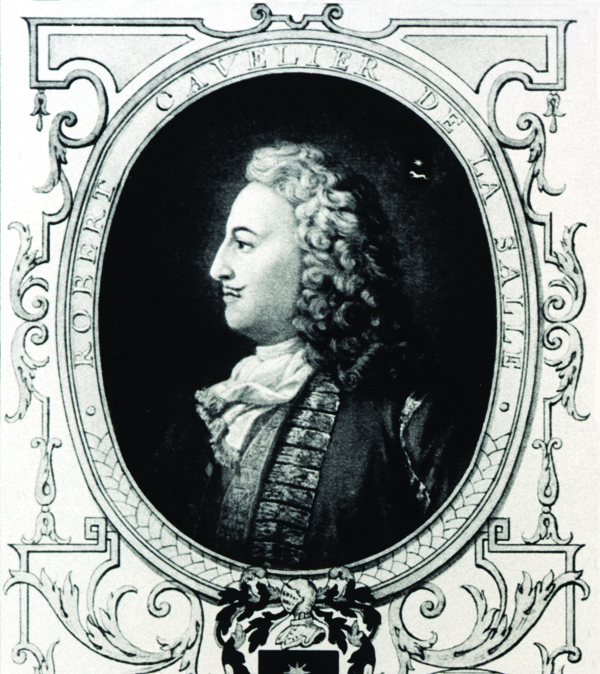From 64 Parishes:
La Salle went to France again in 1677 to request permission from the French finance minister, Jean-Baptiste Colbert, to search for the mouth of the Mississippi River. Colbert complied by granting La Salle the right to establish forts and trade buffalo hides throughout the Mississippi River Valley in his effort to discover a route to Mexico. While preparing for his return trip to Canada, La Salle met Henri de Tonti, a French soldier who lost his hand in a grenade explosion; Tonti would a play crucial role in La Salle’s future expeditions.Share
From 1678 to 1681, La Salle prepared for his descent down the Mississippi by exploring the Great Lakes and the Illinois Valley. He constructed a sailing vessel named the Griffon above Niagara Falls. Though he intended to transport furs back to Montreal, the Griffon sank in Lake Michigan before La Salle could make a profit. La Salle also constructed Fort Crèvecoeur on the Illinois River and left Tonti in command, though a group of disgruntled deserters ruined the outpost in 1680. Later that year, La Salle returned to Fort Crèvecoeur with a fresh group of companions and finally reached the Mississippi River for the first time. He chose not to continue to the Gulf of Mexico, however, until he could organize a better-equipped expedition.
In February 1682, La Salle entered the icy waters of the Mississippi River with Tonti and more than forty Europeans and Native Americans in canoes. He named the river Colbert after his financial benefactor in France. Five written accounts of the first voyage down the Mississippi remain: narratives by La Salle, Tonti, the Recollect priest Zénobe Membré, Nicolas de La Salle (unrelated to René-Robert), and Jacques de La Métairie. La Salle halted the expedition near present-day Memphis, Tennessee, and constructed Fort Prudhomme before continuing to the confluence of the Mississippi and Arkansas rivers.
With the assistance of Arkansas guides, La Salle’s entourage reached the point at which the Mississippi River branched into the Gulf of Mexico (near present-day Venice, Louisiana) and planted a post with the inscription “Louis the Great, King of France and of Navarre, Reigns Here, April 9, 1682.” The king would not learn of La Salle’s discovery until a year later. On April 10, without taking the opportunity to explore the Gulf Coast and the Mississippi’s intricate web of tributaries, La Salle began the return voyage up the river to Canada. (Read more.)


















2 comments:
I'm always pleased to read something about le Sieur de la Salle. There is a "historical" marker near to me in Fairport Harbor, Ohio, commemorating la Salle's 1669-1670 expeditition to the Ohio River. Presuming, that is, that the expedition actually happened. Personally, I am more than happy to err on the side of local history.
On that note, I'm not sure if you are aware but there is currently a major exhibition of art from Tudor England at the Cleveland Museum of Art: "The Tudors: Art and Majesty in Renaissance England. Sunday, February 26, 2023 to Sunday, May 14, 2023. This exhibition traces the transformation of the arts in Tudor England through more than 80 objects—including iconic portraits, spectacular tapestries, manuscripts, sculpture, and armor—from both the Metropolitan Museum of Art’s collection and international lenders."
Sounds fascinating! Thanks!
Post a Comment